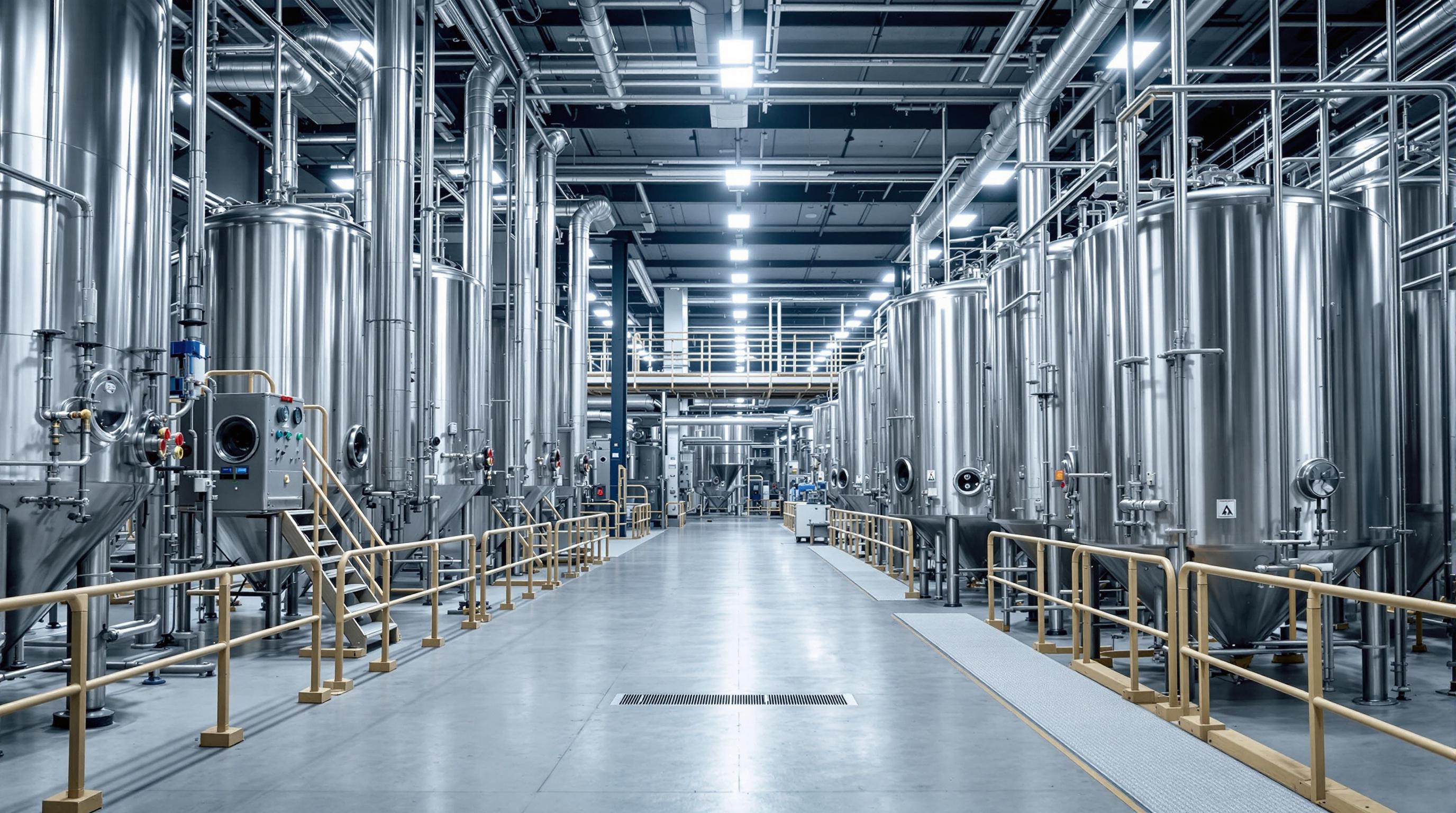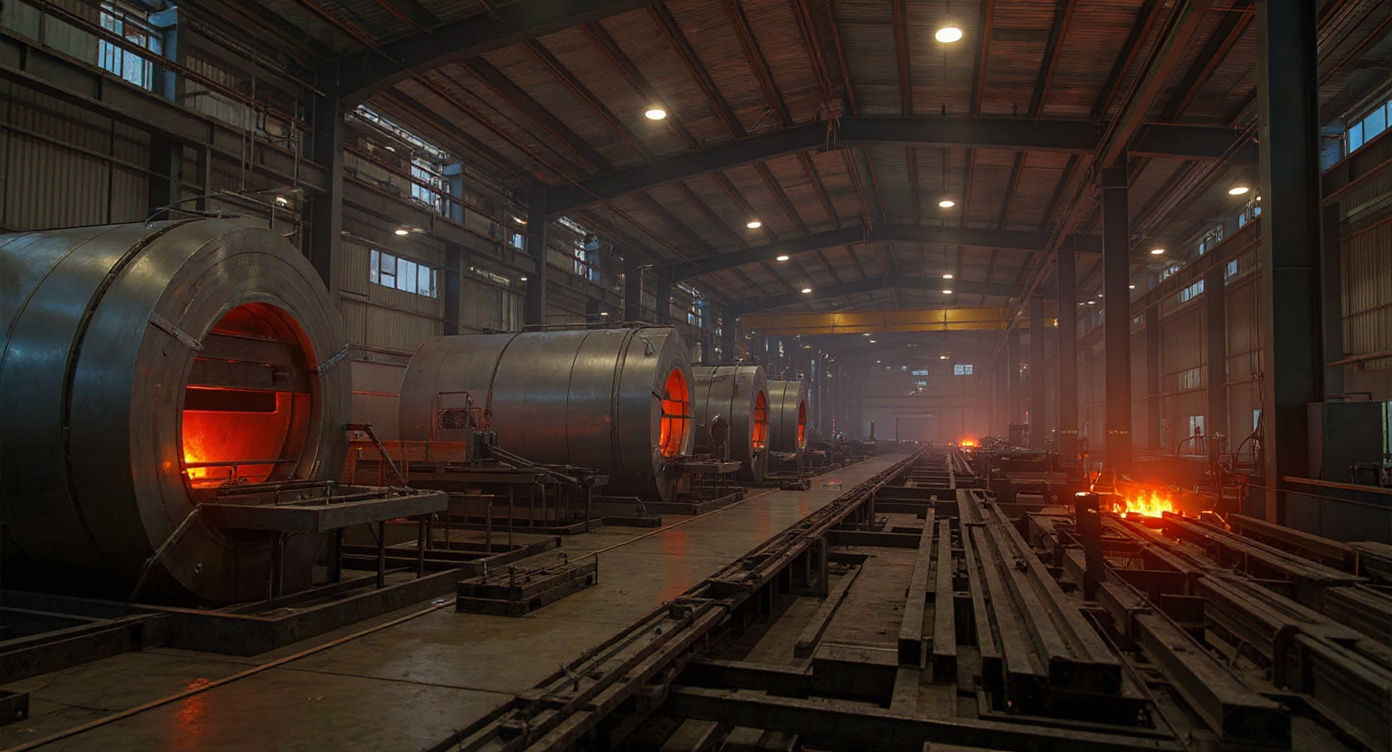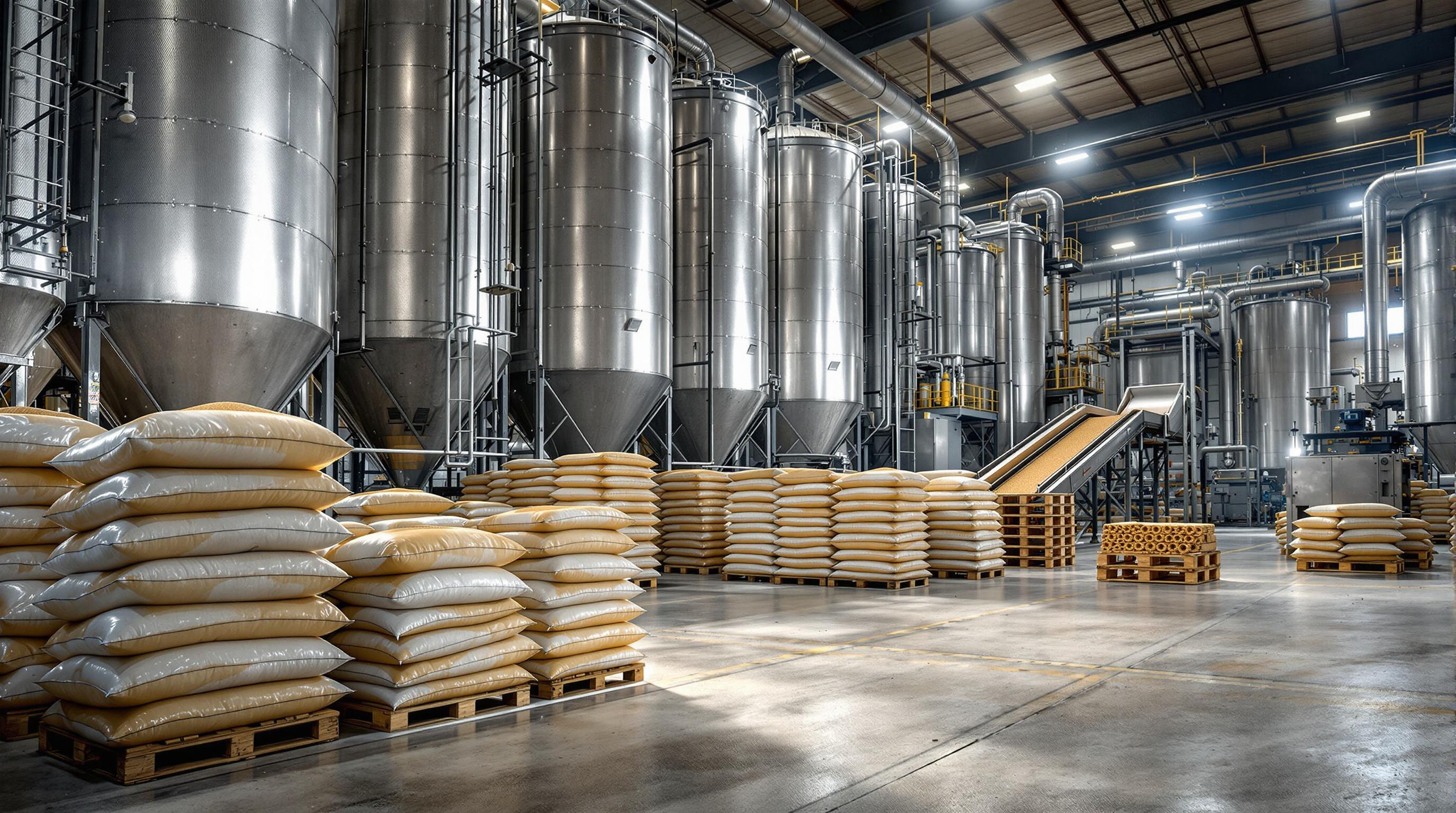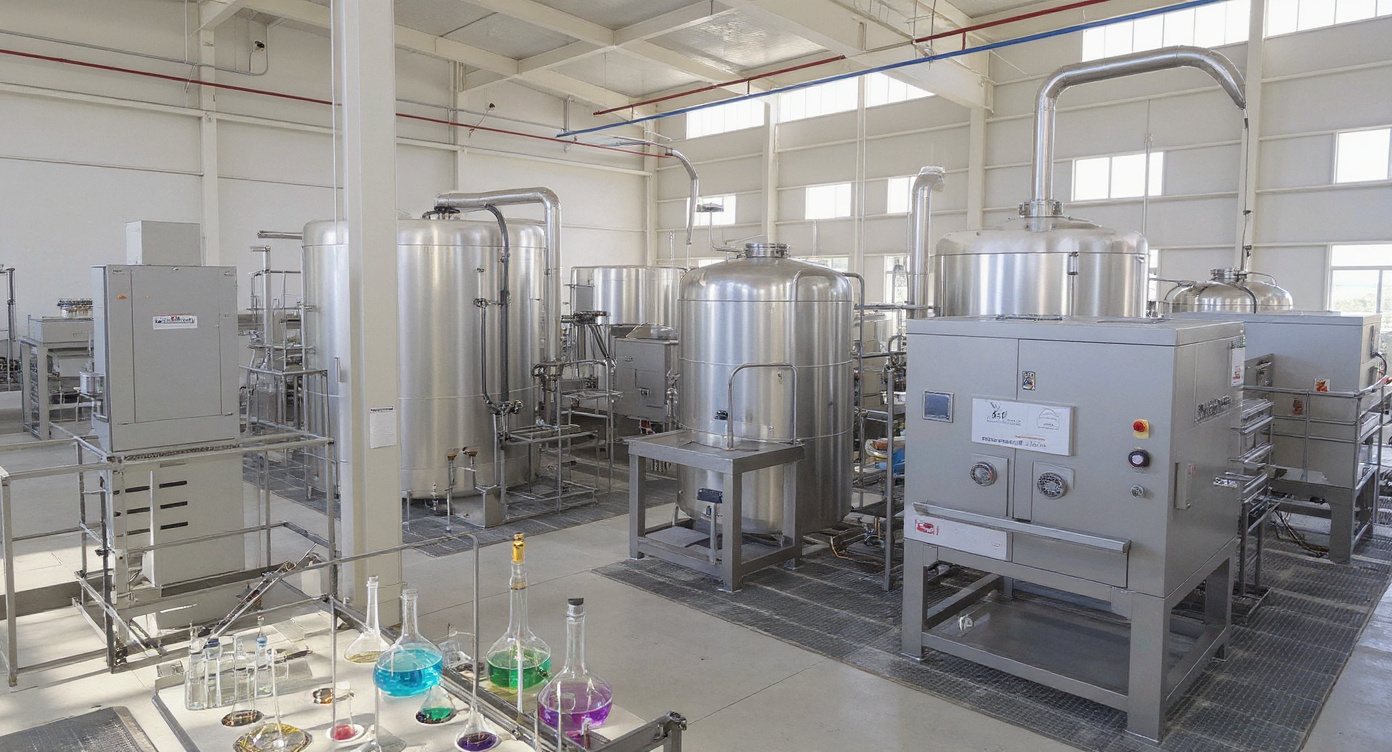What Are Chemical Transfer Pumps?
Chemical transfer pumps are engineered to handle aggressive media such as acids, alkalis, solvents, and chemical slurries that rapidly degrade standard process equipment. These pumps are specified not only for their ability to maintain hydraulic stability but also for their resistance to chemical attack, leakage, and thermal stress during continuous duty.
Design ranges typically span medium to high flow rates and pressures, depending on application, whether moving bulk solvents in storage facilities, dosing neutralizing agents in water treatment, or circulating high-temperature alkalis in reactors. Key to performance is the compatibility between pump construction materials and the specific fluid chemistry: fluoropolymer-lined casings (PTFE, PVDF, PFA) for acids, duplex steels and titanium alloys for high-pressure alkali service, and precision-cast impellers to maintain efficiency across corrosive duty cycles.
Safety & Compliance
A chemical liquid transfer pump must address regulatory and safety imperatives. Seal integrity and emission control are critical in plants where a single leak of caustic soda, chlorine, or hydrochloric acid could compromise worker safety and environmental compliance. In GMP- and ISO-regulated sectors like pharmaceuticals and food, chemical-resistant transfer pumps must ensure sterile, contamination-free fluid handling without compromising equipment longevity.
Types of Chemical Transfer Pumps
Not all chemicals behave the same way, and neither should the pumps designed to move them. The type of chemical transfer pump chosen often determines whether a system runs smoothly for years or suffers frequent downtime.
Centrifugal Chemical Transfer Pumps
The most widely used design, built for high-volume, continuous liquid movement. ANSI/ASME B73.1-compliant models lined with PVDF, PFA, and PTFE for handling aggressive fluids like sodium hydroxide and hydrochloric acid.
Diaphragm Pumps
Excel in dosing, metering, and controlled transfer of aggressive fluids. Available in pneumatic (air-operated) and electric versions with seal-less operation to reduce leakage risks.
Gear Pumps for Chemicals
Ideal for handling viscous or sticky liquids like resins, adhesives, or polymers. Operate on positive displacement principle, ensuring steady flow even under high viscosity.
Submersible Chemical Transfer Pumps
Installed below liquid surface for direct tank, pit, or confined space applications. Minimize priming challenges and are especially useful for effluent handling and tank-to-tank transfers.
High-Pressure Chemical Transfer Pumps
Essential for boiler feed applications, chemical reactors, or reverse osmosis systems. Maintain efficiency under extreme operating pressures while resisting corrosion from concentrated acids or alkalis.
Material Compatibility in Chemical Transfer Pump Selection
When engineers ask, "Which pump is used for chemical transfer?" the answer almost always comes back to material compatibility. Even the most efficient design will fail quickly if the pump's wetted parts are not matched to the chemical's aggressiveness, concentration, or operating temperature.
Non-Metallic Linings for Acid and Alkali Resistance
Polymers like PTFE, PVDF, and PFA are the benchmark for handling concentrated acids, caustic soda, and solvents. Their non-reactive properties prevent surface degradation, while smooth linings reduce energy losses caused by friction. A chemical-resistant transfer pump lined with fluoropolymers is often the best choice for processes involving hydrochloric acid, sodium hydroxide, or high-purity applications in pharma.
Metallic Alloys for High-Pressure and Thermal Stress
Where extreme temperature or pressure is a factor, duplex and super duplex steels outperform plastics. Their mechanical strength resists deformation and stress cracking, making them indispensable in high-pressure reactors, boiler feed systems, or thermal chemical transfer duties. Exotic alloys like titanium extend service life in chloride-rich and abrasive conditions, where standard stainless steels would fail in months.
Industry Applications
The versatility of a chemical transfer pump comes from its ability to adapt to very different duty conditions across industries. From clean pharmaceutical processes to abrasive mining slurries, every sector demands a design matched to its fluids, pressures, and compliance standards.
Pharmaceuticals & Biotechnology
Precision and compliance with sealed, sanitary construction for contamination-free handling of solvents, cleaning agents, and active ingredients with GMP compliance.
Water & Wastewater Treatment
Handling aggressive chemicals like chlorine, caustic soda, or alum for bulk dosing into pipelines and treatment basins with corrosion-resistant construction.
Food & Beverage
CIP (cleaning-in-place) systems handling caustic soda, nitric acid, and sanitizing solutions with FDA/GMP compliance and leak-free operation.
Textiles, Pulp & Paper
Bleaching, dyeing, and pulping processes with exposure to strong alkalis and acids, requiring high-volume centrifugal designs with corrosion-resistant linings.
Mining & Metals
Harsh slurries, acidic leachates, and abrasive particulates handled by pneumatic chemical transfer pumps with air-driven designs that tolerate solids.
Power Generation
Boiler feed and cooling water circuits requiring high-pressure pumps built with duplex steels or exotic alloys for pressure stability and corrosion resistance.
Ensuring Long-Term Reliability
Reliability in chemical transfer is defined by how well a pump withstands corrosive attack and emission risks over continuous duty cycles. Unlike water or utility pumps, failure here is not just downtime; it can mean safety incidents, environmental penalties, and product contamination.
Chemitek's Reliability Features
Seal-less builds for volatile solvents, fluoropolymer-lined casings for acids and halogens, titanium and duplex steels for structural integrity in chloride-rich environments, and cavitation-resistant hydraulics for low-NPSH fluids common in chemical plants.
Chemitek manufactures chemical transfer pumps in horizontal, vertical, submersible, and seal-less configurations, integrating advanced metallurgy with non-metallic linings. Every design is produced within ANSI/ASME and ISO-certified frameworks, ensuring not just compatibility with aggressive fluids but also predictable uptime, lifecycle efficiency, and audit-ready reliability across industries.
 ISO 9001:2015 certified
ISO 9001:2015 certified
 ISO 14001:2015 certified
ISO 14001:2015 certified
 ISO 45001:2018 certified
ISO 45001:2018 certified











